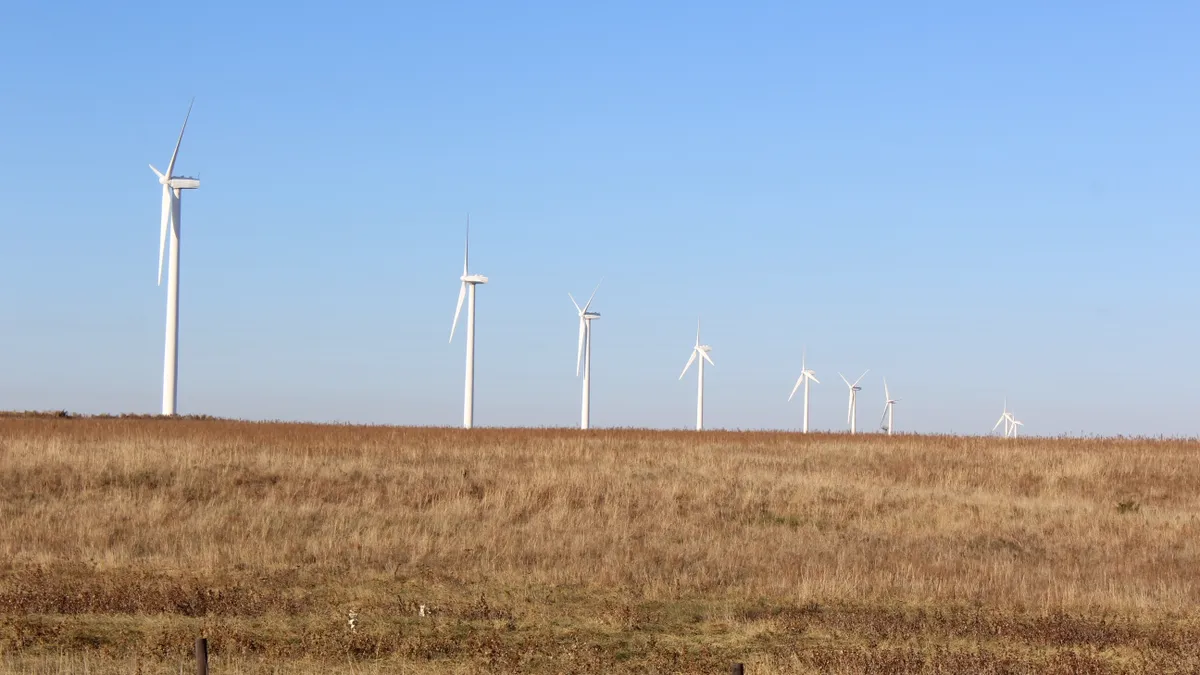Dive Brief:
-
The U.S. hit a record $55.5 billion in renewable energy investments in 2019, as overall global investments beat out 2018, thanks to a flurry of wind investments at the end of the year, according to a recent report.
-
Worldwide investment hit $282.2 billion in 2019, up $2 billion since 2018, according to a BloombergNEF report released Thursday on 2019 clean energy investment trends. New wind and solar is estimated to have hit 180 GW, up 20 GW from 2018.
-
Onshore and offshore wind investments led in 2019, increasing 6% since 2018 to reach $138.2 billion, with solar close behind at $131.1 billion.
Dive Insight:
A last-minute push from U.S. investors on wind in response to the Production Tax Credit winding down, as well as bullish investments from Europe and China on offshore wind, led to a surge in investments at the end of 2019, momentum that's anticipated to carry through 2020, according to BloombergNEF.
"What was looking like quite a quiet year really kind of changed in the last few months with all these offshore wind deals coming through," Chief Editor at BloombergNEF Angus McCrone told Utility Dive. "It'll be another strong year in the U.S. because of the approach of the expiry of the tax credits."
Though China led on renewables investments, its purchases hit their lowest numbers since 2013 at $83.4 billion, down 8% since 2018. The U.S. was the second largest purchaser, increasing investments 28% since 2018, notable considering President Donald Trump has been a consistent critic of wind energy, said McCrone.
The record for U.S. investments is "a bit counterintuitive given that the administration there has not really been emphasizing renewables," he said.
China brought forward 15 offshore wind projects at the end of 2019, to take advantage of its own expiring tax credit and its spending decrease was largely due to a dropoff in solar investments. Massive Chinese solar investments in 2017 led to the installation of 53 GW of solar, unsustainable for the country to maintain under its country's subsidies, said McCrone, which explains the tapering off of those investments in recent years.
But McCrone said BloombergNEF anticipates solar investments to ramp back up in China within the next few years, under purchases outside of government subsidies. The global market began to see fewer subsidized purchases overall in 2019, which analysts take as a sign the market may be shifting even further in favor of wind and solar investments
"There's a lot of incentive for people to get on with projects now," he said. "I think probably the most exciting thing is the emergence of these projects that are happening without any government set tariff at all."
There was also notable renewables development in the Middle East this year, which BloombergNEF thinks could spur the market in that region more.
The United Arab Emirates in July opened the largest operating solar farm in the world at 1.17 GW, which could unlock major potential for solar power in the desert region, said McCrone, and Taiwan was able to get three major offshore wind projects financed.
Waste-to-energy and biomass investments also increased 9% in 2019, hitting $9.7 billion. Geothermal and hydro investments dropped 56% to $1 billion and 3% at $1.7 billion, respectively.















